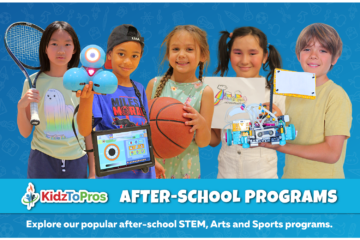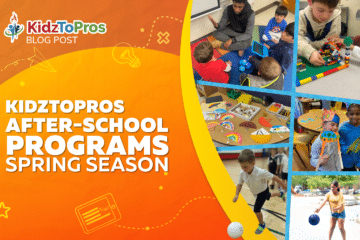Schools Getting Rid of the Arts & Some Solutions

It’s not your imagination. School districts are offering fewer classes in visual or performing arts. This has been met with some dissatisfaction and a few protests. Parents and educators understand how important these programs are for developing brains. At the same time, school districts have to make drastic budget cuts. Here are some reasons why schools are getting rid of the arts, the ramifications and what parents can do about it.
History
According to studies, more than 80% of schools nationwide have experienced budget cuts since 2008. For example, around the country “during the 1999-2000 school year, 20% of schools offered dance and theatre classes, and 87% of schools offered visual arts classes.”
Now only 3% of schools budget for dance classes, and 4% for theatre.
State and national academic priorities
One of the largest school districts in the country, the Los Angeles Unified School District, laid off one-third of their 345 arts teachers between 2008 – 2012. This left half of K-5 students without an arts education.
This trend continues today. And not just in Los Angeles.
One of the reasons this is happening is because arts funding is diverted to math, science and language arts classes. As a country, our priorities have switched to core academic subjects and money is required to prepare and test students to ensure learning is happening.
This is also true for remedial services to help children improve test scores.
Laws and consequences
The No Child Left Behind Act was a more recent piece of legislation that put emphasis on academic subjects. Once passed, the law required schools around the country to test in these areas and the higher the scores, the better.
Higher scores are also tied to funding from state and federal authorities. So it’s natural that school districts would begin prioritizing this way.
Another act that focused on core subjects is the Common Core Standards Act. The intent of this legislation was to focus on improving student performance in college preparatory subjects.
When classes are not seen as conducive to the goals of high standardized test scores, the funding tends to drop. It’s unfortunate because study after study shows that visual and performing arts can do a lot to help increase academic ability in students.
Another consequence to dropping arts programs is that it tends to occur along economic lines. This does nothing to help the cause of education equity and in fact, might make it worse.
For example, wealthier school districts, as well as private schools, can raise money among higher income donors to offset these cuts. That means this lack of arts programming hits undervalued communities the hardest.
These areas need arts education, and its benefits, more than ever.
The benefits of visual and performing arts on academic achievement
Arts programs in schools help children get better grades in academic studies and on basic skills tests. Public School Review also shows exposure to arts means better college and job prospects.
Teachers agree that there is a link between performing arts classes and higher comprehension. To that end, when humanities and history curriculum include novels, movies, and music – kids better retain that knowledge. They have greater ease than those who learn with textbooks only. Reading, cognition and verbal SAT scores are also higher among students who sing or play an instrument.
What about visual arts?
Visual arts programs can spark a lifelong passion. Graphic design artists, architects and animation directors often credit the lessons they learned as children for introducing them to meaningful career paths.
What about kids who have different interests, such as robotics, coding or even sports?
Visual arts programs can help them, too.
There are other benefits as well that include social and emotional improvement. This is why almost every community has arts activists. They’re pushing for fewer cuts to the arts at the elementary, middle and high school level.
School district solutions
Some school districts are having success with integration efforts. In other words, administrators are blending arts into traditional classes, and curriculum, in order to keep that education going forward.
Arts classes don’t have to be separate and costly. They can be a part of math, science and language arts.
For example, language arts can have students perform scenes, books or plays from their lists of assignments. They can create alternative book reports that allow kids to draw or sculpt their favorite scenes from something they read in class.
Math classes can pair up nicely with music and drawing exercises. All three disciplines use the same parts of the brain. Science can also blend to do a bit of what math and language arts classes accomplish.
Many districts have adopted either the National Core Art Standards or some version of it. This means that curriculum for arts classes must include the following components:
Creating: Encourages artistic ideas among students and explores how to develop or refine them.
Performing, Presenting, & Producing: Students present artwork and convey meaning through that presentation.
Responding: Students evaluate artwork to better understand it.
Connecting: Helping students to consider the historical, cultural and societal context of art.
These standards create a rich learning experience for kids.
Parental solutions
Moms and dads are reaching out to school districts and advocating for this issue. They are also taking matters into their own hands. Here are some ways you can create an atmosphere that promotes and appreciates the arts in your family.
- Take your children to local museums or galleries. Inquire about student passes or discounts so you can attend often throughout the year.
- Keep supplies on hand that encourage children to draw and create.
- Is there a theater program in your town? They often hold auditions and offer family discounts.
- Set aside time each week to explore music, movies or literature that coincide with what your kids are learning in school.
- Form a co-op with friends and their kids. For example, let’s say you’re a great singer. A parent you know used to teach piano. Another might be into crafting. And still another parent is talented at acting out scenes from plays or books. Every week one of you can take the kids for an afternoon and let them explore each discipline. It’s a fun way to learn!
If your child’s favorite arts programs aren’t being offered during the school day, you can also check after-school programs and holiday/summer camps.
Organizations like KidzToPros can help.
We offer a stellar listing of after-school arts programs. They are still out there. Click here to search for and find the educational resources, including arts programs, your kids need to be a well-rounded student.



0 Comments